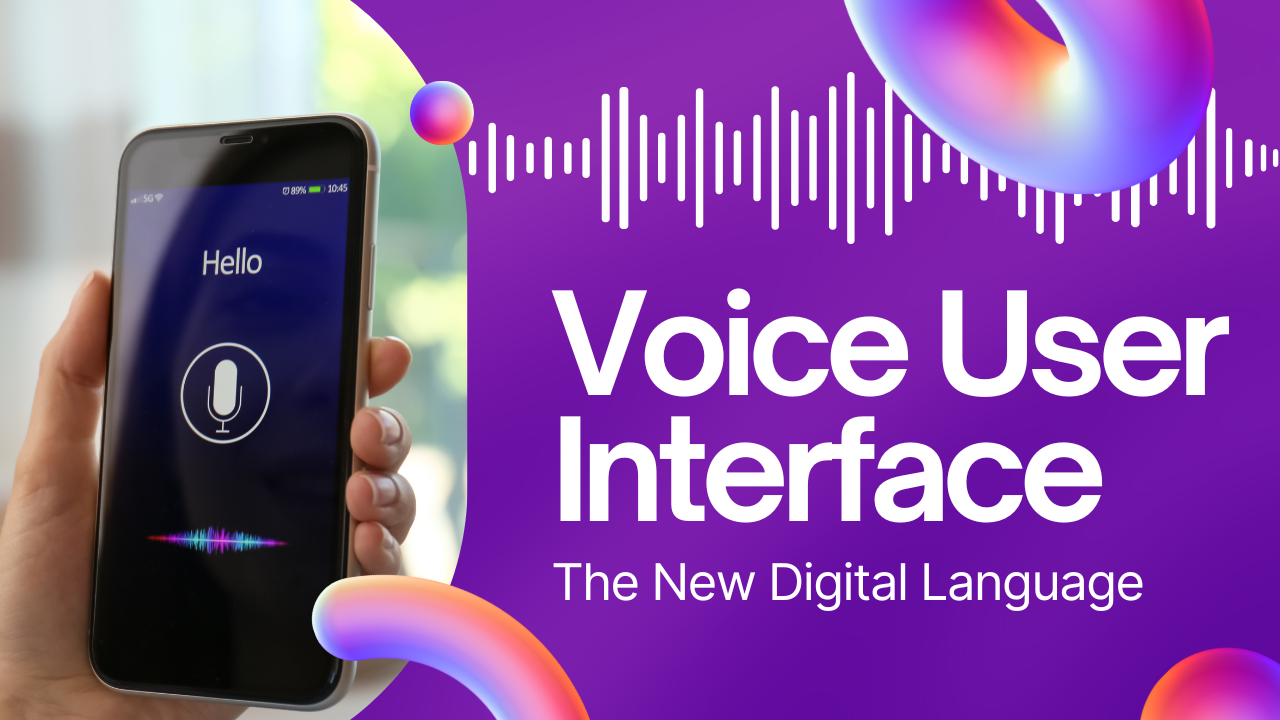You've probably spoken to Alexa, Siri, or Google Assistant to play music, set reminders, or check the weather. But have you ever wondered what makes these seamless interactions possible? That's the power of a Voice User Interface (VUI) a technology that's transforming how we connect with our devices.
Unlike traditional interfaces where you click, tap, or type, VUI lets you simply speak to get things done. It's intuitive, hands-free, and feels more natural. As voice technology continues to evolve, many are asking: "Is VUI the future of how we interact with technology?"
Whether you're tech-savvy or just curious, let's explore how VUI is changing our digital conversations.
How does Voice User Interface (VUI) work?
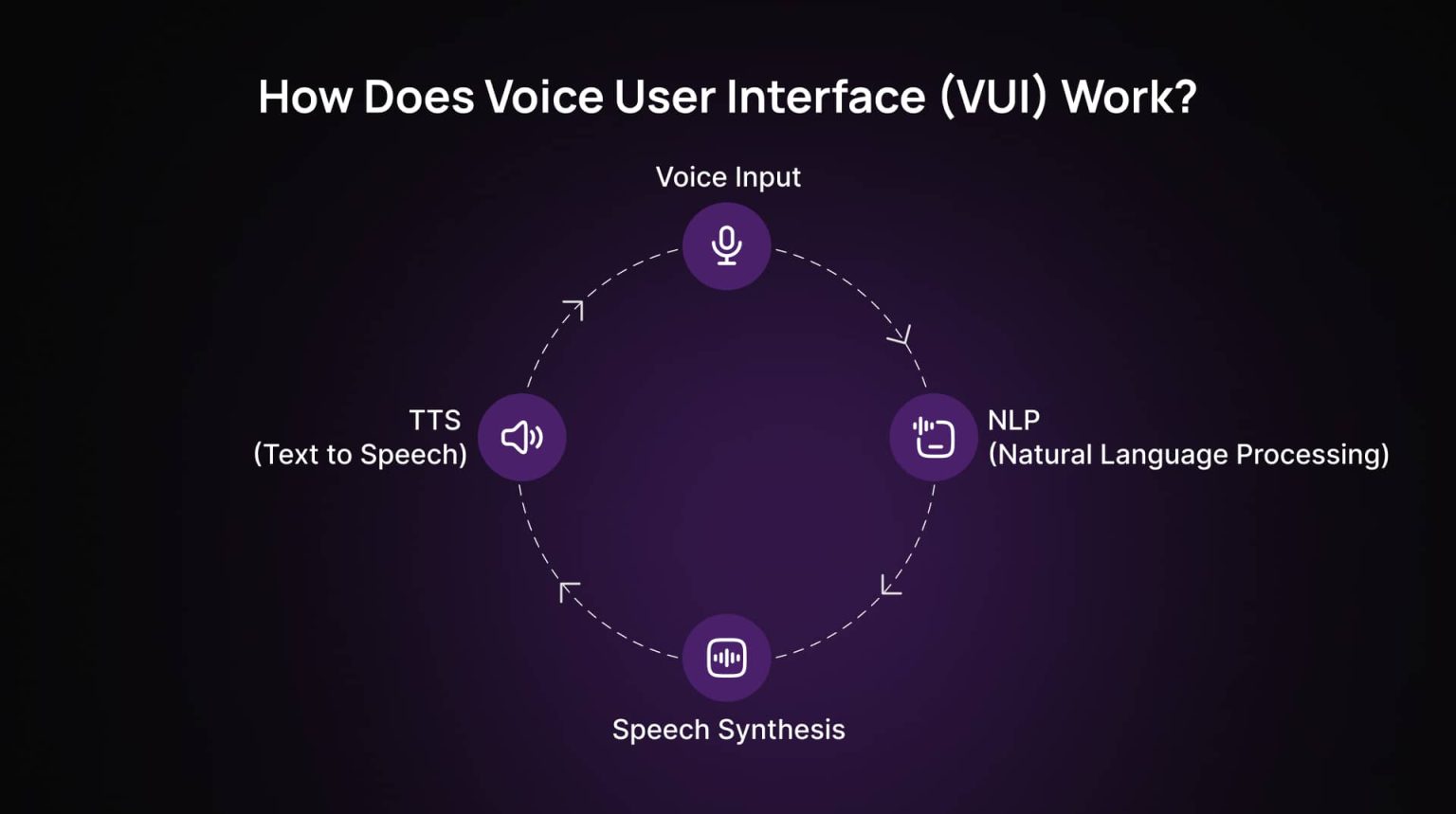
(Image Source: Reloadux)
Voice User Interface allows us to control devices through spoken commands. Here's a breakdown of how it works:
Voice Input (Speech Recognition): The device captures your voice commands using Automatic Speech Recognition (ASR), converting spoken words into text the system can process.
Understanding the Request (Natural Language Processing): Through Natural Language Processing (NLP), the system interprets your meaning by analyzing sentence structure and identifying key phrases.
Finding the Answer or Performing the Task: After understanding your command, the VUI passes it to the appropriate application for execution.
Delivering the Response (Text-to-Speech): Finally, the system converts its response into natural-sounding speech using Text-to-Speech (TTS) technology.
VUI applications
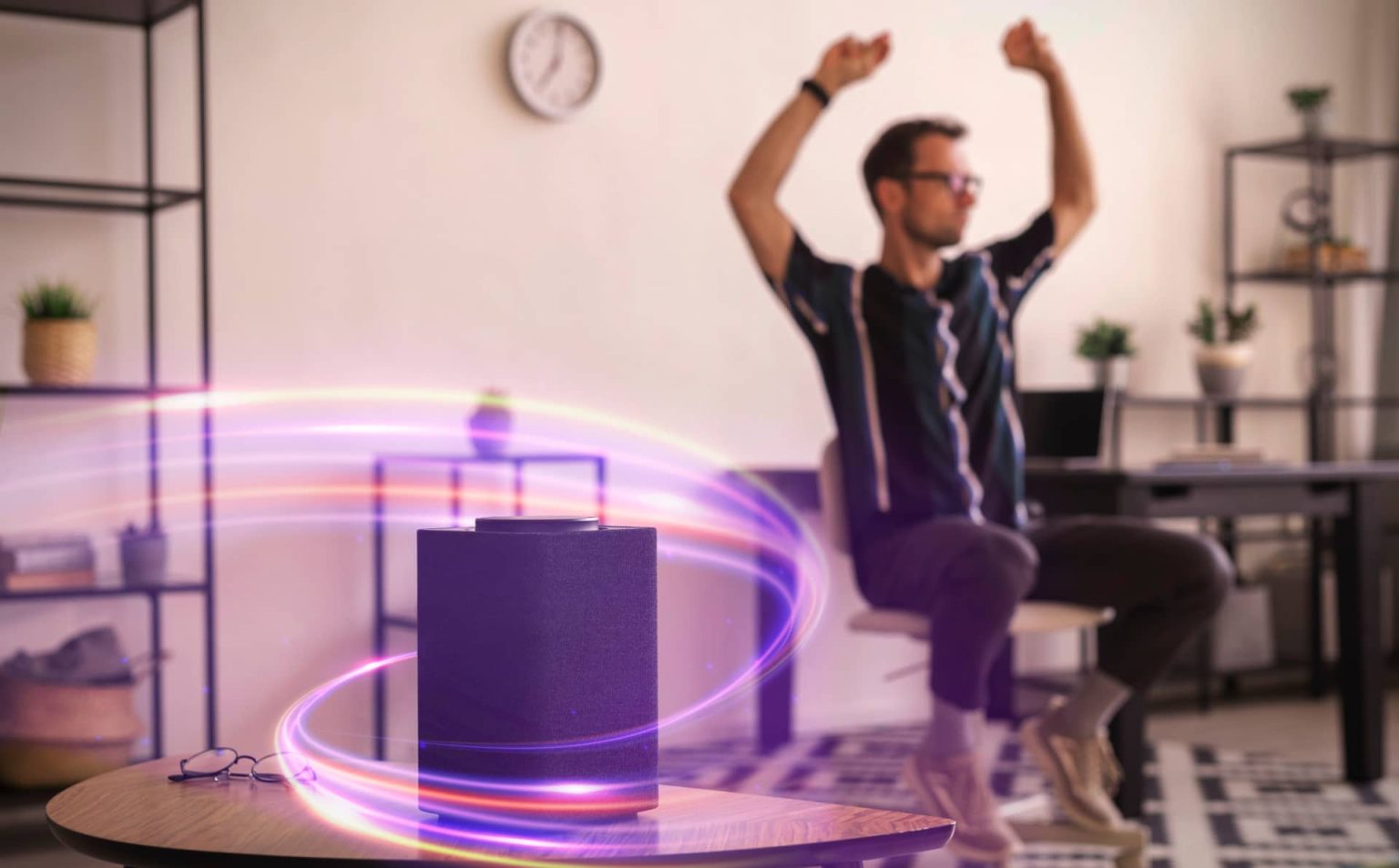
(Image Source: Reloadux)
Voice interfaces have evolved from a novelty feature to an essential component of modern technology. Their applications extend beyond business to enhance our daily routines.
Smart home devices showcase VUI's practical benefits. Products like Amazon Alexa and Google Nest let you control lights, adjust thermostats, and manage security systems with simple voice commands. Tasks that once required physical effort can now be completed hands-free making life easier for everyone, particularly those with mobility challenges.
Beyond personal convenience, businesses are leveraging voice technology to enhance customer experiences while reducing operational costs. Modern automated phone systems with VUI capabilities handle customer support and routine inquiries like billing or appointment scheduling with remarkable efficiency.
VUI's role in accessibility cannot be overstated. For people with disabilities, voice technology offers independence, allowing them to interact with devices without relying on keyboards or touchscreens. This inclusivity highlights VUI's broader social impact.
From homes to hospitals, offices to retail stores, VUI applications continue to expand. As technology advances, it's clear that voice interfaces aren't just convenient they're reshaping how we live, work, and connect with our world.
Technical challenges and limitations
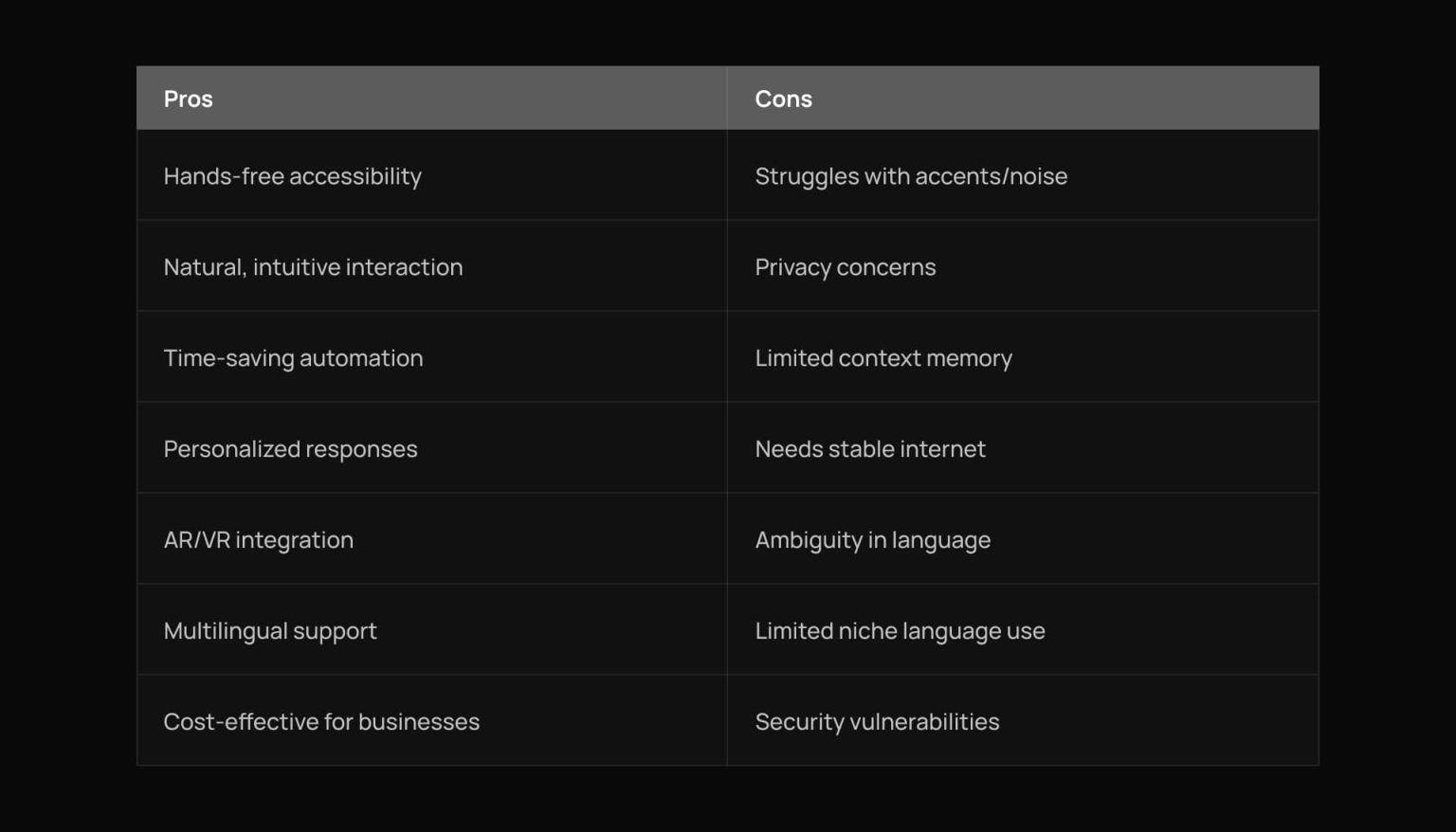
(Image Source: Reloadux)
Despite its potential, VUI technology faces several significant hurdles:
1. Speech recognition accuracy
The foundation of VUI speech recognition still struggles with variations in accents, dialects, background noise, and individual speech patterns. Someone with a strong regional accent speaking in a noisy environment might find their device consistently misinterpreting commands. While machine learning models are improving, achieving perfect recognition across diverse situations remains challenging.
2. Natural language processing limitations
Human language is complex and filled with ambiguity. When asked to "book a table," does the user want a restaurant reservation or to purchase furniture? Such ambiguities confuse NLP systems, causing frustrating misunderstandings while AI continues developing better contextual comprehension.
3. Data privacy and security concerns
The "always listening" nature of VUI devices raises legitimate privacy questions. Users worry about how their voice data is captured, stored, and potentially shared. For widespread adoption, companies must implement robust encryption and transparent privacy policies that build user trust.
4. Limited multi-language support
While most VUI systems can handle multiple languages, switching between them seamlessly remains problematic. Systems often struggle with regional languages, code-switching (mixing languages), and culturally specific expressions.
5. Contextual understanding and memory limitations
Many VUI systems lack sophisticated contextual memory. If you ask "What's the weather in New York?" followed by "What about tomorrow?", the system may not remember the location reference. This limitation makes conversations feel disjointed and unnatural.
6. Dependency on internet connectivity
Most VUI platforms rely on cloud processing for speech recognition and interpretation. In areas with poor connectivity or during outages, these systems may become unreliable, frustrating users who depend on voice commands.
The future of Voice User Interfaces
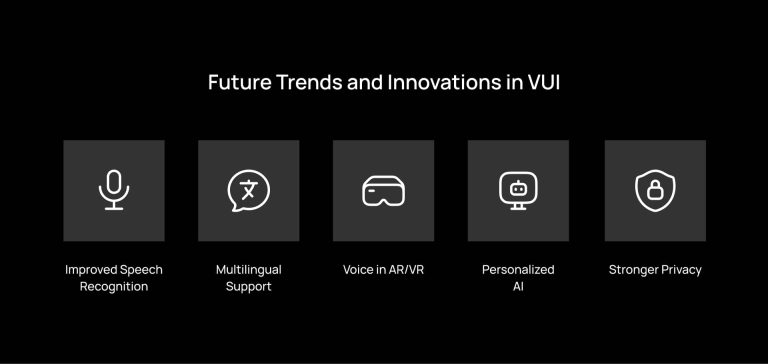
(Image Source: Reloadux)
VUI continues to evolve alongside advancements in artificial intelligence, speech recognition, and consumer expectations for touchless interaction. Here are the most promising trends:
1. Improved speech recognition with AI
Advanced machine learning algorithms are dramatically improving recognition accuracy across different accents, dialects, and speech patterns. Future systems will better understand not just words but emotional tones, making conversations feel more natural.
2. Multilingual and cross-language capability
Next-generation VUI systems will seamlessly handle multiple languages and mixed-language input particularly valuable in multilingual households where family members might switch between languages mid-conversation.
3. Voice in Augmented Reality (AR) and Virtual Reality (VR)
As AR and VR technologies mature, voice commands become essential for navigating immersive environments where traditional inputs are impractical. Industries like healthcare and aviation are already incorporating VUI-powered training that allows hands-free, intuitive learning.
4. AI-powered personalized voice experiences
Voice assistants are becoming smarter about individual preferences and habits. Imagine your assistant suggesting dinner options based not just on a generic query, but considering your dietary restrictions and what's actually in your refrigerator.
5. Enhanced privacy and security features
Addressing privacy concerns, future voice systems will incorporate stronger encryption and more on-device processing, ensuring sensitive voice data stays on your personal device rather than traveling to external servers.
Conclusion
Voice User Interfaces are fundamentally changing our relationship with technology, offering intuitive, hands-free experiences powered by advances in AI and natural language processing. While challenges in accuracy, privacy, and contextual understanding persist, VUI's future looks promising from making technology more accessible to enabling smarter, more personalized interactions. For businesses and designers, embracing voice technology today isn't just about staying current it's about preparing for a future where our conversations with devices become increasingly natural and powerful.
